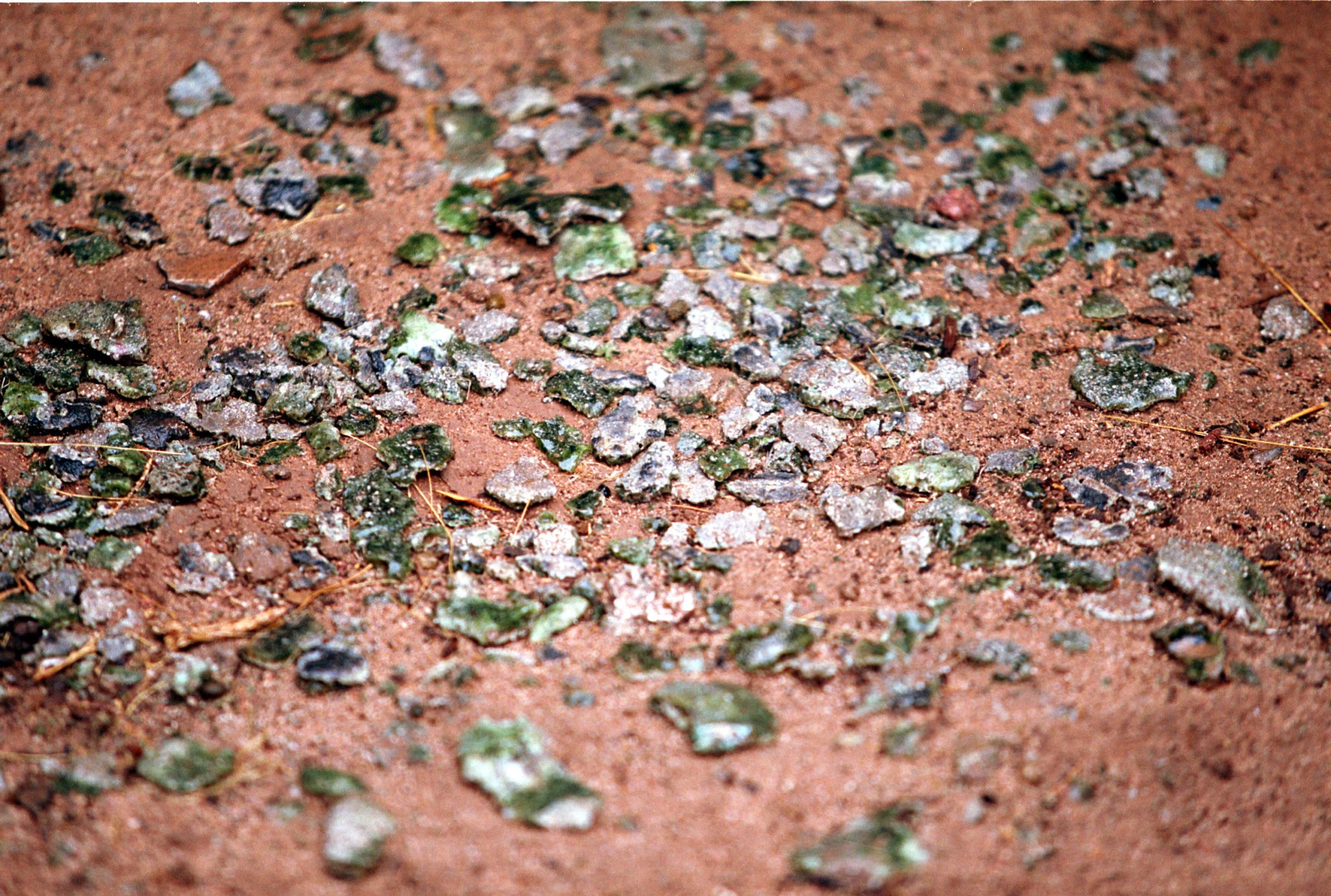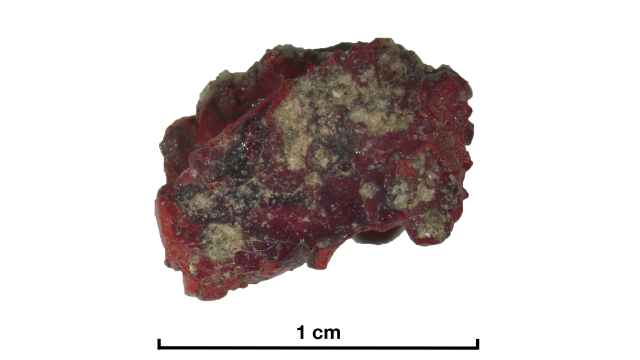It’s reasonable to think of nuclear bombs in terms of their destructive capabilities; splitting the atom means obliteration for anything in the blast radius. But, as a team of geologists and physicists recently figured out, it also means creation: specifically, the transfiguration of ordinary crystalline structures into previously unimaginable geometries.
On July 16, 1945, a terrifyingly bright mushroom sprouted from the New Mexican desert. It was the Trinity bomb test, the first-ever detonation of an atomic bomb. The blast vaporised the 27.43 m tower from which the bomb dropped and turned the surrounding sands into a field of green, glassy trinitite, so named for the occasion that brought the material into existence. Most trinitite is green, but some is red, as the atoms making up the copper wiring at the site got jumbled up with the sand in the blast. Forged from the intense pressure and heat of a nuclear detonation, the red trinitite looks a bit like very mouldy steak. The team behind the recent research looked at bits of the trinitite under an electron microscope to figure out whether there were any extraordinary structures visible there.

Their research was published this week in the Proceedings of the National Academy of Sciences. It describes a quasicrystal, which refers to how the structure is laid out in space. Crystals have periodic structures, meaning their microscopic building blocks regularly repeat at a certain rate. But the building blocks of quasicrystals don’t repeat regularly, and in so doing take on asymmetric, non-repeating structures that ordinary crystals are incapable of. One such structure is the icosahedron, a 20-sided shape reminiscent of a soccer ball. Crystals don’t manifest as icosahedra on a micro-scale, and, for a couple of centuries, consensus among theorists was that all matter was either glassy or crystalline. But quasicrystals break those rules; when an icosahedron pops up, scientists know they’re dealing with something different.
“The moment you go from periodic to quasi-periodic, all bets are off on the symmetry,” said Paul Steinhardt, a theoretical physicist at Princeton University and co-author of the paper, in a video call. “All those 200-year rules go out the window — any symmetry is allowed, including the most famous forbidden symmetry for solids, which is the symmetry of an icosahedron. With quasicrystals, suddenly, an infinitude of possibilities is available to you.”

The trinitite the team examined was just a centimetre across, and the quasicrystal a minuscule 10 microns. To get the crystal under the microscope, lead author Luca Bindi, a geologist at the University of Florence, had to pick it out with the tip of a needle. Once isolated, the team shot X-rays at the sample along different axes, to see whether it was a quasicrystal or not.
The telltale sign would be if the itsy-bit of trinitite had fivefold symmetry, a pattern crystals do not take on. Quasicrystals can be made in labs today, but scientists still don’t know exact recipes — they’re more accidental creations that arise when cooking up other stuff. Quasicrystals also occur naturally, though they’re extremely rare. The team previously found quasicrystals lurking in an ancient meteorite found in Northern Russia. They often have metal elements, though it’s not a rule. That’s why the team perked up when they heard the trinitite in New Mexico contained some metal odds and ends.
“We think that there is need of transient, extreme high-pressure, high-temperature conditions to form quasicrystals (in meteorites, in shock-wave experiments, and now in nuclear blasts),” said Bindi in an email. “I would have responded that they can form only for peculiar combinations of elements (usually with aluminium as major component) before this discovery. Now we know that they can also form unpredicted combinations of elements.”
The researchers hope and expect that quasicrystals — formed in the most intense environments, from the collisions of the early solar system to the destructive science of nuclear warfare — are hiding in other sites that have seen extreme physical tumult. The search continues for these enigmatic microstructures, a reminder to crystal that it’s not the only game in town.
